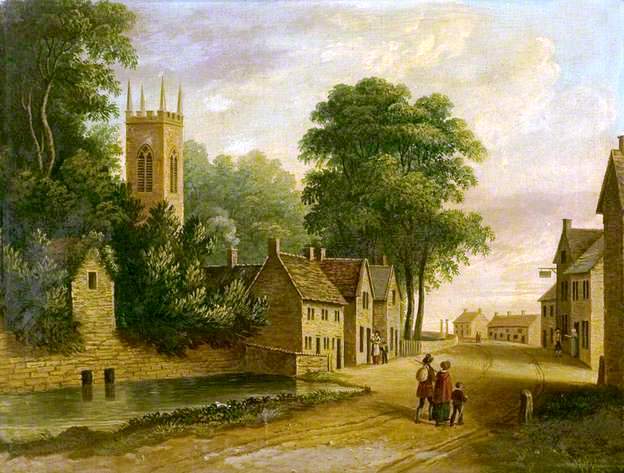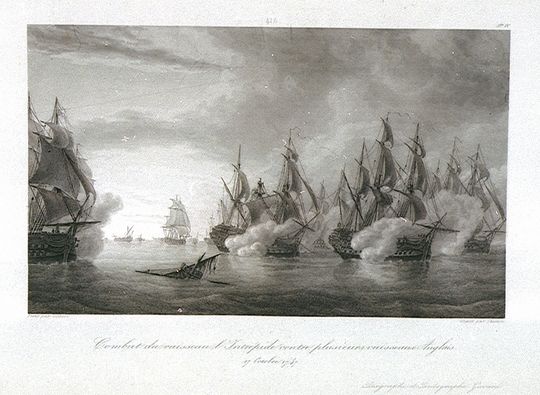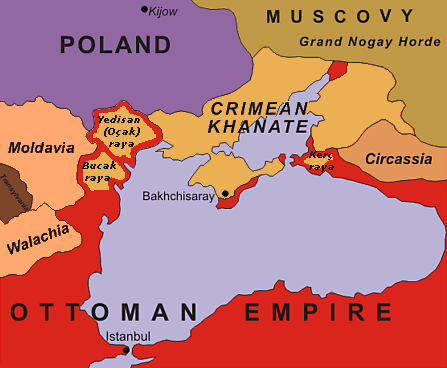|
Peter Cunningham (priest)
Reverend Peter Cunningham was probably born in 1747 and died in Chertsey on 24 June 1805. For most of his life he acted as a curate and published several poems of a political tendency. Life Accounts of Peter Cunningham's life have mostly been gleaned from the writings and correspondence of the Seward family, covering his period as curate at Eyam in 1775-90, and principally from four letters of his that have been preserved from that period. In addition, two accounts of him are given in 19th century works dealing with Eyam, Ebenezer Rhodes' ''Peak Scenery'' and William Wood's ''The History and Antiquities of Eyam''. The account of him given in a past edition of the ''Dictionary of National Biography'' is vague and conjectural. Three letters were written to Thomas Seward immediately before and after his installation as curate at Eyam. He there describes himself as the son of a naval officer who would have preferred him to follow a military career and now cannot be bothered to write ... [...More Info...] [...Related Items...] OR: [Wikipedia] [Google] [Baidu] |
Chertsey
Chertsey is a town in the Borough of Runnymede, Surrey, England, southwest of central London. It grew up around Chertsey Abbey, founded in AD 666 by Earconwald, St Erkenwald, and gained a municipal charter, market charter from Henry I of England, Henry I. A bridge across the River Thames first appeared in the early 15th century. The River Bourne, Chertsey, River Bourne through the town meets the Thames at Weybridge. The Anglicanism, Anglican church has a medieval tower and chancel roof. The 18th-century listed buildings include the current stone Chertsey Bridge and Botleys Mansion. A curfew bell, rung at 8pm on weekdays from Michaelmas to Lady Day ties with the romantic local legend of Blanche Heriot, marked by a statue of her and the bell at Chertsey Bridge. Green areas include the Thames Path National Trail, Chertsey Meads and a round knoll (St Ann's Hill) with remains of a prehistoric Hillfort, hill fort known as Eldebury Hill. Pyrcroft House dates from the 18th century and ... [...More Info...] [...Related Items...] OR: [Wikipedia] [Google] [Baidu] |
George Rodney
Admiral (Royal Navy), Admiral George Brydges Rodney, 1st Baron Rodney, Order of the Bath, KB (baptism, bap. 13 February 1718 – 24 May 1792), was a Royal Navy officer, politician and colonial administrator. He is best known for his commands in the American War of Independence, particularly his victory over the French at the Battle of the Saintes in 1782. It is often claimed that he was the commander to have pioneered the tactic of Naval tactics in the Age of Sail#Developments during the American War of Independence, breaking the line. Rodney came from a distinguished but poor background, and went to sea at the age of fourteen. His first major action was the Second Battle of Cape Finisterre (1747), Second Battle of Cape Finisterre in 1747. He made a large amount of Prize (law), prize money during the 1740s, allowing him to purchase a large country estate and a seat in the House of Commons of Great Britain. During the Seven Years' War, Rodney was involved in a number of amphibi ... [...More Info...] [...Related Items...] OR: [Wikipedia] [Google] [Baidu] |
Surrey
Surrey () is a Ceremonial counties of England, ceremonial county in South East England. It is bordered by Greater London to the northeast, Kent to the east, East Sussex, East and West Sussex to the south, and Hampshire and Berkshire to the west. The largest settlement is Woking. The county has an area of and a population of 1,214,540. Much of the north of the county forms part of the Greater London Built-up Area, which includes the Suburb, suburbs within the M25 motorway as well as Woking (103,900), Guildford (77,057), and Leatherhead (32,522). The west of the county contains part of Farnborough/Aldershot built-up area, built-up area which includes Camberley, Farnham, and Frimley and which extends into Hampshire and Berkshire. The south of the county is rural, and its largest settlements are Horley (22,693) and Godalming (22,689). For Local government in England, local government purposes Surrey is a non-metropolitan county with eleven districts. The county historically includ ... [...More Info...] [...Related Items...] OR: [Wikipedia] [Google] [Baidu] |
Russo-Turkish War (1787–92)
The Russo-Turkish wars ( ), or the Russo-Ottoman wars (), began in 1568 and continued intermittently until 1918. They consisted of twelve conflicts in total, making them one of the longest series of wars in the history of Europe. All but four of these wars ended in losses for the Ottoman Empire, which was undergoing a period of stagnation and decline. Conversely, they showcased the ascendancy of the Russian Empire as a significant European power after Peter the Great oversaw extensive modernization efforts in the early 18th century. Ultimately, however, the end of the Russo-Turkish wars came about with the dissolution of the two belligerents' respective states as a consequence of World War I: the Russian Empire collapsed in 1917 and was ultimately succeeded by the Union of Soviet Socialist Republics in 1922; while the Ottoman Empire was partitioned between 1918 and 1922 and succeeded by the Republic of Turkey in 1923. History Initial and intermediate phases (1568–1739) ... [...More Info...] [...Related Items...] OR: [Wikipedia] [Google] [Baidu] |
Constantinople
Constantinople (#Names of Constantinople, see other names) was a historical city located on the Bosporus that served as the capital of the Roman Empire, Roman, Byzantine Empire, Byzantine, Latin Empire, Latin, and Ottoman Empire, Ottoman empires between its consecration in 330 until 1930, when it was renamed to Istanbul. Initially as New Rome, Constantinople was founded in 324 during the reign of Constantine the Great on the site of the existing settlement of Byzantium, and shortly thereafter in 330 became the capital of the Roman Empire. Following the collapse of the Western Roman Empire in the late 5th century, Constantinople remained the capital of the Eastern Roman Empire (also known as the Byzantine Empire; 330–1204 and 1261–1453), the Latin Empire (1204–1261), and the Ottoman Empire (1453–1922). Following the Turkish War of Independence, the Turkish capital then moved to Ankara. Although the city had been known as Istanbul since 1453, it was officially renamed as Is ... [...More Info...] [...Related Items...] OR: [Wikipedia] [Google] [Baidu] |
Ottoman Empire
The Ottoman Empire (), also called the Turkish Empire, was an empire, imperial realm that controlled much of Southeast Europe, West Asia, and North Africa from the 14th to early 20th centuries; it also controlled parts of southeastern Central Europe, between the early 16th and early 18th centuries. The empire emerged from a Anatolian beyliks, ''beylik'', or principality, founded in northwestern Anatolia in by the Turkoman (ethnonym), Turkoman tribal leader Osman I. His successors Ottoman wars in Europe, conquered much of Anatolia and expanded into the Balkans by the mid-14th century, transforming their petty kingdom into a transcontinental empire. The Ottomans ended the Byzantine Empire with the Fall of Constantinople, conquest of Constantinople in 1453 by Mehmed II. With its capital at History of Istanbul#Ottoman Empire, Constantinople (modern-day Istanbul) and control over a significant portion of the Mediterranean Basin, the Ottoman Empire was at the centre of interacti ... [...More Info...] [...Related Items...] OR: [Wikipedia] [Google] [Baidu] |
Genius (mythology)
In Religion in ancient Rome, Roman religion, the genius (; : ''genii'') is the individual instance of a general divine nature that is present in every individual person, place, or thing. Much like a guardian angel, the ''genius'' would follow each man from the hour of his birth until the day he died. For women, it was the Juno (mythology), Juno spirit that would accompany each of them. Nature Each individual place had a ''genius'' (''genius loci'') and so did powerful objects, such as volcanoes. The concept extended to some specifics: the ''genius'' of the theatre, of vineyards, and of festivals, which made performances successful, grapes grow, and celebrations succeed, respectively. It was extremely important in the Roman mind to propitiate the appropriate ''genii'' for the major undertakings and events of their lives. Thus man, following the dictates of his heart, venerated something higher and more divine than he could find in his own limited individuality, and brought to "th ... [...More Info...] [...Related Items...] OR: [Wikipedia] [Google] [Baidu] |
St Petersburg
Saint Petersburg, formerly known as Petrograd and later Leningrad, is the List of cities and towns in Russia by population, second-largest city in Russia after Moscow. It is situated on the Neva, River Neva, at the head of the Gulf of Finland on the Baltic Sea. The city had a population of 5,601,911 residents as of 2021, with more than 6.4 million people living in the Saint Petersburg metropolitan area, metropolitan area. Saint Petersburg is the List of European cities by population within city limits, fourth-most populous city in Europe, the List of cities and towns around the Baltic Sea, most populous city on the Baltic Sea, and the world's List of northernmost items#Cities and settlements, northernmost city of more than 1 million residents. As the former capital of the Russian Empire, and a Ports of the Baltic Sea, historically strategic port, it is governed as a Federal cities of Russia, federal city. The city was founded by Tsar Peter the Great on 27 May 1703 on the s ... [...More Info...] [...Related Items...] OR: [Wikipedia] [Google] [Baidu] |
Catherine The Great
Catherine II. (born Princess Sophie of Anhalt-Zerbst; 2 May 172917 November 1796), most commonly known as Catherine the Great, was the reigning empress of Russia from 1762 to 1796. She came to power after overthrowing her husband, Peter III. Under her long reign, inspired by the ideas of the Enlightenment, Russia experienced a renaissance of culture and sciences, which led to the founding of many new cities, universities, and theatres, along with large-scale immigration from the rest of Europe and the recognition of Russia as one of the great powers of Europe. In her accession to power and her rule of the empire, Catherine often relied on her noble favourites, most notably Count Grigory Orlov and Grigory Potemkin. Assisted by highly successful generals such as Alexander Suvorov and Pyotr Rumyantsev, and admirals such as Samuel Greig and Fyodor Ushakov, she governed at a time when the Russian Empire was expanding rapidly by conquest and diplomacy. In the south, the ... [...More Info...] [...Related Items...] OR: [Wikipedia] [Google] [Baidu] |
House Of Cavendish
The Cavendish (or de Cavendish) family ( ; ) is a British Nobility, noble family, of Anglo-Normans, Anglo-Norman origins (though with an Old English, Anglo-Saxon name, originally from a place-name in Suffolk). They rose to their highest prominence as Duke of Devonshire and Duke of Newcastle. Leading branches have held high offices in English and then in British politics, especially since the Glorious Revolution of 1688 and the participation of William Cavendish, 1st Duke of Devonshire, William Cavendish (then Earl of Devonshire) in the ''Invitation to William'', though the family appears to date to the Norman Conquest of England, with ''Cavendish'' being used (in one form or another) as a surname since the beginning of the 13th century. As a place-name, it is first recorded in 1086. Early history As a place-name, it is first recorded as in 1086 in the ''Domesday Book'', and appears to have a meaning of 'Cafna's Pasture', from personal byname (from 'bold, daring'), and ... [...More Info...] [...Related Items...] OR: [Wikipedia] [Google] [Baidu] |
Battle Of The Saintes
The Battle of the Saintes (known to the French as the Bataille de la Dominique), also known as the Battle of Dominica, was an important naval battle in the Caribbean between the British and the French that took place 9–12 April 1782. The British victory was considered their greatest over the French during the American Revolutionary War. The British fleet under Admiral Sir George Rodney defeated a French fleet under the Comte de Grasse, forcing the French and Spanish to abandon a planned invasion of Colony of Jamaica, Jamaica. The battle is named after the Îles des Saintes, a group of small islands between Guadeloupe and Dominica in the West Indies. The French had blockaded the British Army during the American War of Independence, British Army at Chesapeake Bay the year before, during the Siege of Yorktown, and supported the eventual American victory in their revolution. This battle, however, halted their momentum and had a significant effect on Peace of Paris (1783), peace n ... [...More Info...] [...Related Items...] OR: [Wikipedia] [Google] [Baidu] |








